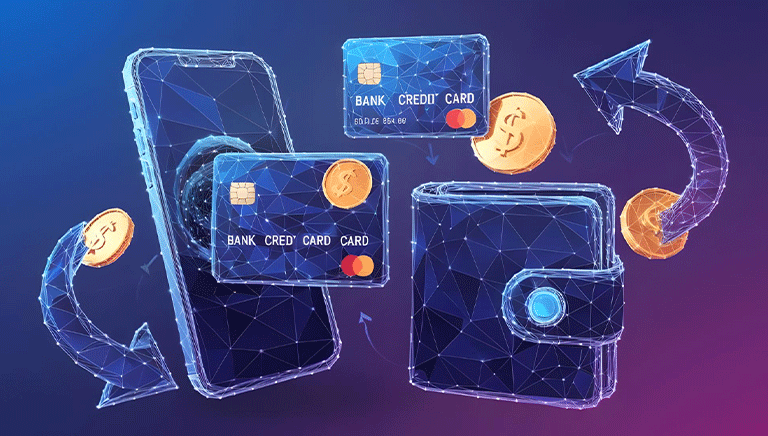Digital Wallets vs Traditional Banking: What You Need to Know

In the past, handling money meant going to a bank, opening a savings account, and waiting in long queues just to make simple transactions.
Today, things have changed. With just your phone, you can send, receive, and manage your money without stepping into a bank. But how exactly do digital wallets compare to traditional banks?
Let’s break it down in simple terms, so you know what works best for you.
What Is a Digital Wallet?
A digital wallet is an app or online service that stores your money electronically. You can send and receive funds, pay for goods, and even access financial services — all from your smartphone.
Some examples of digital wallets include Numoni, Apple Pay, PayPal, and Google Wallet.
These wallets are linked to your phone number or email, and in many cases, you can fund them using your bank account, card, or even cash at physical locations.
What Is Traditional Banking?
Traditional banking refers to the regular banks we’re all used to — the ones with physical branches, ATM cards, and paperwork. You can open an account, deposit cash, request loans, and perform other services in person or online.
Banks are regulated by financial institutions, and their processes usually involve more steps and documentation.
Key Differences Between Digital Wallets and Banks
Here’s a quick look at how they differ:
1. Accessibility
Digital wallets are available 24/7. No waiting for a bank to open or close. You just need an internet connection and a smartphone.
Banks are still limited by working hours. Some now offer online banking, but you may still need to visit a branch for major services.
2. Speed
Sending money with digital wallets is often instant. You can transfer funds in seconds.
Banks may take hours or even days to process transactions, especially across different banks or countries.
3. Ease of Use
Digital wallets are made for convenience. You tap, scan, or send — it’s that easy. You don’t have to memorize account numbers or fill out long forms.
Traditional banking often requires more steps, paperwork, and sometimes long lines at the branch.
4. Fees
Most digital wallets offer lower or no fees for transactions. Many even reward users with cashback or bonuses.
Banks tend to charge higher fees for transfers, maintenance, or withdrawals.
5. Security
Both digital wallets and banks invest in strong security systems. However, wallets rely heavily on mobile security — passwords, PINs, biometrics.
Banks often use more traditional verification like physical IDs and documents, which may be less convenient but still secure.
6. Availability
Digital wallets are growing fast, especially in countries where banking access is limited. Anyone with a phone can open a wallet.
Banks may not be accessible to people in rural or underserved areas.
When to Use a Digital Wallet
Use a digital wallet if:
-
You want to send or receive money instantly
-
You do a lot of online shopping or make frequent mobile payments
-
You don’t want to deal with long bank queues or paperwork
-
You prefer quick access to your funds, anywhere and anytime
For example, Numoni lets you post deals, earn rewards, and manage your spending in one place — all from your phone. It’s great for those who want smarter control over their money, without the hassle.
When to Use a Bank
Stick to traditional banking if:
-
You need services like loans, mortgages, or large financial investments
-
You deal with large sums of money regularly
-
You’re required to use banks for salary deposits or business transactions
Banks are still important, especially for long-term savings or formal financial services. But they’re not always the fastest or most flexible for everyday money management.
Can You Use Both?
Yes, and most people do.
A smart way to manage your money is to keep your savings in a bank, while using a digital wallet like Numoni for your daily expenses, payments, and transfers.
This way, you enjoy the best of both worlds — the security of a bank and the flexibility of a wallet.
Pros and Cons in Simple Terms
| Feature | Digital Wallets | Traditional Banks |
|---|---|---|
| Access | Anytime, anywhere | Branch hours apply |
| Transaction Speed | Instant | Slower |
| Ease of Use | Very easy | Often more formal |
| Cost | Usually free or low | Can be expensive |
| Security | Strong mobile security | Traditional but stable |
| Support | Online help/chat | In-person, sometimes slower |
Final Thoughts
Digital wallets and traditional banks serve different purposes. One isn’t better than the other — it depends on your needs.
If you’re looking for a fast, flexible, and user-friendly way to manage your money daily, digital wallets like Numoni are a smart choice. You can access deals, post your offers, and keep track of your spending — all in one app.
But if you’re planning to save long-term, apply for a loan, or get financial advice, traditional banks are still your go-to option.
The key is balance. Use digital wallets for speed and everyday spending, and banks for stability and structure.
Ready to take control of your money with less stress?
Try out Numoni today. No paperwork, no queues. Just smarter financial living at your fingertips.


